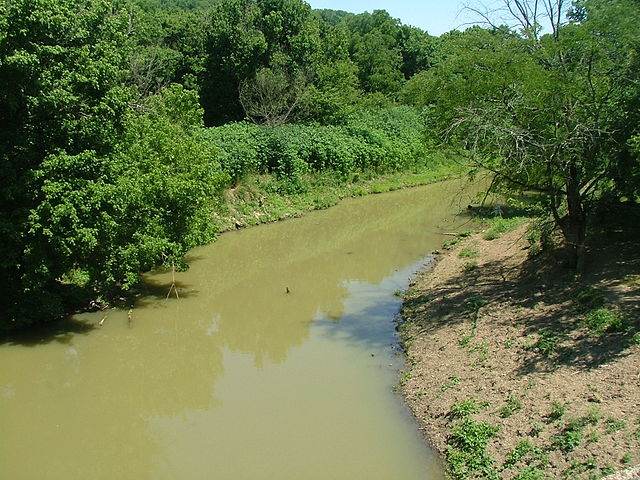The Battle of Blue Licks, fought on August 19, 1782, was one of the last battles of the American Revolutionary War. The battle occurred ten months after Lord Cornwallis's surrender at Yorktown, which had effectively ended the war in the east. On a hill next to the Licking River in what is now Robertson County, Kentucky, a force of about 50 Loyalists along with 300 indigenous warriors ambushed and routed 182 Kentucky militiamen, who were partially led by Daniel Boone, the famed frontiersman. It was the last victory for the Loyalists and natives during the frontier war. British, Loyalist and Native forces would engage in fighting with American forces once more the following month in Wheeling, West Virginia, during the Siege of Fort Henry.
Daniel Boone rallying his men during the battle
This 1820 oil painting by Chester Harding is the only portrait of Daniel Boone made from life. Boone, 85 years old and just months away from death, had to be steadied by a friend while the artist worked.
Monument at the Blue Licks Battlefield State Park, photographed in 2006 during a memorial service marking the 224th anniversary of the battle.
The Licking River is a partly navigable, 303-mile-long (488 km) tributary of the Ohio River in northeastern Kentucky. The river and its tributaries drain much of the region of northeastern Kentucky between the watersheds of the Kentucky River to the west and the Big Sandy River to the east. The North Fork Licking River, in Pendleton County, Kentucky, is one of its tributaries. The South Fork Licking River, in counties including Harrison County, Kentucky, is another.
The mouth of the Licking River, where it joins the Ohio River
The Licking River near the Blue Licks Battlefield State Park
The North Fork near Mays Lick






